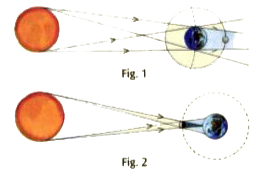2 phenylethylbromide when heated with NaOEt, elimination takes place. No deuterium exchange takes place when the reaction is
carried out in C2H5OD solvent. The mechanism will be
E1 elimination
E2 elimination
E1cB elimination
E2 or E1cB
The correct Answer is:B
To solve the problem, we need to analyze the reaction of 2-phenylethyl bromide when heated with sodium ethoxide (NaOEt) and determine the mechanism involved in the elimination process.
1. Identify the Reactants:
The reactant in this case is 2-phenylethyl bromide, which can be represented as:
C6H5CH2CH2Br
This compound has a bromine atom attached to a primary carbon adjacent to a phenyl group.
2. Understand the Reaction Conditions:
The reaction is carried out in the presence of sodium ethoxide (NaOEt), which is a strong base. The conditions suggest that elimination is favored.
3. Consider the Mechanisms of Elimination:
There are two primary mechanisms for elimination reactions:
- E1 (Unimolecular elimination)
- E2 (Bimolecular elimination)
4. Analyze the Deuterium Exchange:
The problem states that no deuterium exchange occurs when the reaction is conducted in a solvent of C2H5OD. This indicates that the hydrogen atom involved in the elimination is not being replaced or exchanged with deuterium from the solvent.
5. Determine the Type of Elimination:
The absence of deuterium exchange suggests that the hydrogen atom is not being removed to form a carbocation (which would be the case in an E1 mechanism). Instead, it indicates that the elimination occurs in a concerted manner, where the base abstracts a proton and the leaving group (bromine) departs simultaneously.
6. Conclude the Mechanism:
Since the reaction proceeds without the formation of a carbocation and involves a concerted mechanism, we conclude that the elimination occurs via the E2 mechanism.
The final product of the reaction will be an alkene, specifically styrene (C6H5CH=CH2), along with the by-products of ethanol and bromide ion.
Final Answer:
The mechanism of the reaction is E2 elimination.
The reactant in this case is 2-phenylethyl bromide, which can be represented as:
C6H5CH2CH2Br
This compound has a bromine atom attached to a primary carbon adjacent to a phenyl group.
The reaction is carried out in the presence of sodium ethoxide (NaOEt), which is a strong base. The conditions suggest that elimination is favored.
There are two primary mechanisms for elimination reactions:
- E1 (Unimolecular elimination)
- E2 (Bimolecular elimination)
The problem states that no deuterium exchange occurs when the reaction is conducted in a solvent of C2H5OD. This indicates that the hydrogen atom involved in the elimination is not being replaced or exchanged with deuterium from the solvent.
The absence of deuterium exchange suggests that the hydrogen atom is not being removed to form a carbocation (which would be the case in an E1 mechanism). Instead, it indicates that the elimination occurs in a concerted manner, where the base abstracts a proton and the leaving group (bromine) departs simultaneously.
Since the reaction proceeds without the formation of a carbocation and involves a concerted mechanism, we conclude that the elimination occurs via the E2 mechanism.
The mechanism of the reaction is E2 elimination.
Similar Questions
Knowledge Check
Effervescence takes place when sodium carbonate solution is added to
AformaldehydeBacetaldehydeCacetic acidDphenol
No net diffusion of water takes place when
View SolutionThe reaction take place by mechanism is

View SolutionInspiration can take place only when:
View SolutionThe nuclear fusion reaction between deuterium and tritium takes place
View SolutionEndosmosis takes place when a plant cell is immersed in
View SolutionThe type of eclipse takes place when the moon is in the Earth's umbra region
View Solution
When does a lunar eclipse take place?
View Solution
